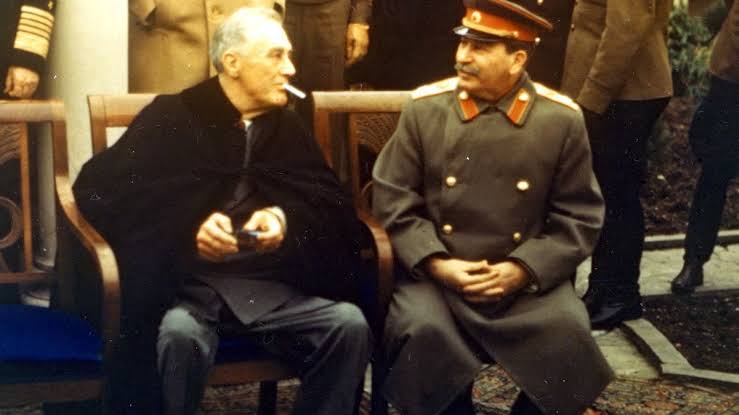The Yalta Conference was a Feb. 1945 meeting between the heads of the USSR, Britain, and the United States, to discuss the post-World War Two order of Germany and Europea. The conference was held in the Crimea. But in an age of primitive air travel and the difficulty of trans-continental travel, how did FDR get to Yalta?
Admiral William Leahy, who had been at Yalta, later told FDR that the arrangement that had been agreed upon was “so elastic that the Russians can stretch it all the way from Yalta to Washington without ever technically breaking it.” FDR protested that it was “the best that I could get.” FDR’s defenders have typically argued that there was nothing the president could have done to prevent Eastern Europe from going Communist in the power vacuum left by the annihilation of Germany. But Professor Richard Ebeling is probably on to something when he concludes: “Based on his comments to Cardinal Spellman and other Americans, and from his explicit giving of a free hand to Stalin in Poland and the Baltic States at the Tehran Conference, in fact FDR really did not give a damn whether the people in these countries got anything more.” Sociologist Robert Nisbet argued in his book Roosevelt and Stalin that what Yalta and particularly the Declaration on Liberated Europe did for Stalin was to provide moral legitimation for his Eastern European conquests.
FDR’s Promises to Stalin After Yalta
In order to persuade Stalin to enter the war against Japan, FDR granted the Soviet Union control of Manchuria, the province of China whose occupation by Japan in the early 1930s had provoked the wrath of American interventionists. There Stalin was able to provide safe haven for the Chinese Communists and to outfit them with captured Japanese military equipment, thus paving the way for the Communist takeover of China in 1949. After the Yalta meeting FDR maintained his sanguine view of Stalin (or “Uncle Joe,” as the president affectionately referred to him). He suspected that some of Stalin’s early seminary training—Uncle Joe had briefly pursued the Russian Orthodox priesthood—must have stayed with him. “I think that something entered into his nature of the way in which a Christian gentleman should behave,” said FDR.
The White House’s favorable view of Stalin went on longer than people realize. Roosevelt died in April 1945. He was replaced by vice president Harry Truman, who is usually thought to have been more skeptical of the Soviet Union than FDR. But when in 1946 Winston Churchill delivered his famous “iron curtain” speech in Fulton, Missouri, noting that human freedom was being extinguished as a result of Soviet domination of Eastern Europe, Truman actually apologized to Stalin, and offered to bring him to the United States for a rebuttal.
Cite This Article
"How Did FDR Get to the Yalta Conference?" History on the Net© 2000-2024, Salem Media.
April 20, 2024 <https://www.historyonthenet.com/how-did-fdr-get-to-yalta>
More Citation Information.






